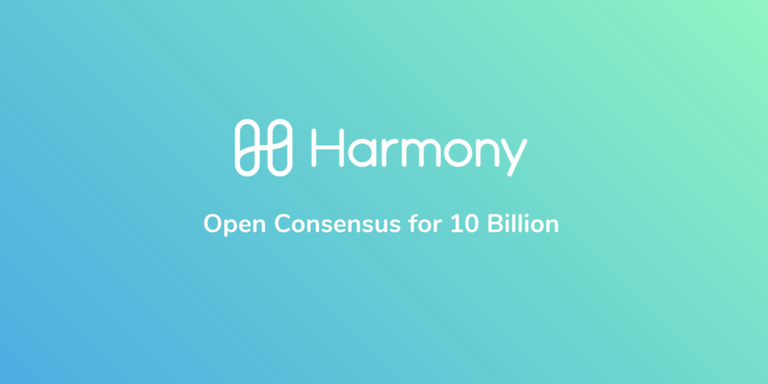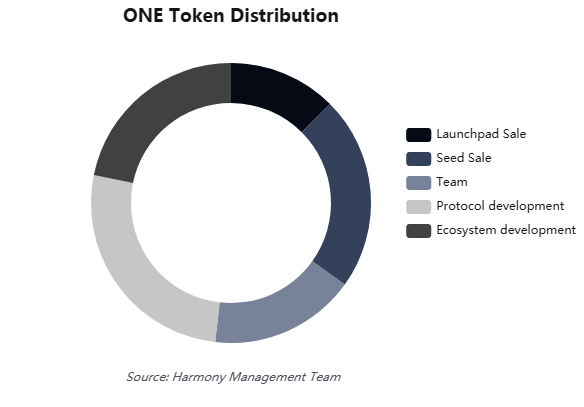Introduction
Just like any other technology, Blockchain technology; reverred as the next big thing after web 3.o is still yet to fully tackle the this textbook trilemma which any trademark technology needs to contend with anytime they are brought into the spotlight. As such, security, speed and scalability represents the best metric via which their performance is rated.
Blockchain technology has being able to use the concept of decentralization to solve the problem of security while handling total control of the process to its users. However, an average blockchain performance reveals that this obvious advantage comes at a price, which is speed of transaction (measured in TPS). This loophole alongside scalability constitute one of the major reason why blockchain technology is yet to witness mass adoption by different sectors including Fin tech or gather sufficient attention from institutional investors to move the technology to the next level.
In a bid to put this drawbacks in check, alternative blockchain option apart from bitcoin and ethereum such as Zilliqa, introduced sharding technology to handle the complex task of computing large data as the network expands and get inevitably slow. However, the implementation of the sharding concept along with the PoW(Proof of Work) consensus further brought up familiar issues of scalability and security resulting from partial decentralization as evident in the performance dieficiencies revealed below.
Therefore, in this article, we shall get the opportunity to discuss a new exciting project, Harmony Blockchain that aims to change the landscape for billions of blockchain users but first lets highlight the problem statements.
[1] Pseudo-decentralization; other blockchain attempt to implement sharding concept has helped compromise the decentralized nature of the network, hence security. For instance in the case of Zilliqa; which does not implement state sharding, but rather a network such that the blockchain data are not divided. This arrangement ensures that machines or nodes with less resources are constantly left out of the network consensus. This partial-decentralization makes the network more susceptible to the risk of a [2] single-shard attack resulting from its reliance on Proof of Work consensus mechanism.
Harmony Blockchain Overview
Harmony is a PoS (Proof-of-stake) next-generation, sharding-based blockchain that is fully scalable, provably fair and energy efficient. Their goal is to build a high-performance blockchain capable of serving 10 Billions people at the same time without compromising speed of transaction and security while maintaining its scalability for public use. So far, the team can boast of some breakthroughs in the following aspect
Fully Scalable ; Harmony does not only shard the network communication and transaction validation like zilliqa, it also shards the blockchain state.
Secure Sharding: Harmony’s sharding process is provably secure thanks to the distributed randomness generation (DRG) process which is unpredictable, unbiaseable,verifiable and scalable. Harmony also reshards the network in a non-interruptive manner to
prevent against slowly adaptive byzantine adversaries.Adaptive-Thresholded PoS; The threshold of stakes required for a node to join thenetwork is adjusted based on the volume of total staking in a way that malicious stakerscannot concentrate their power in a single shard. Moreover, the threshold is low enough sothat small stakers can still participate in the network and earn rewards.
Efficient and Fast Consensus; Unlike other sharding-based blockchains which require
PoW to select validators, Harmony is based on PoS and thus energy efficient. Consensusis reached with a linearly scalable BFT algorithm that’s 100 times faster than PBFT.Scalable Networking Infrastructure; With RaptorQ fountain code, Harmony can
propagate blocks quickly within shards or across network by using the Adaptive Information Dispersal Algorithm. Harmony also adopts Kademlia routing to achieve
cross-shard transactions that scale logarithmically with the number of shards.Consistent Cross-Shard Transactions ; Harmony supports cross-shard transactionswith shards directly communicating with each other. An atomic locking mechanism is usedto ensure the consistency of cross-shard transactions.
Identifying the key technologies/concepts driving the Harmony Blockchain
Harmony blockchain is the product of intensive research on some of the most inventive concept in blockchain technology. The idea is to build a high-performance blockchain capable of handling applications that were previously not feasible on the blockchain while negotiating a trust network for billions of blockchain users. For this to be possible, Harmony re-invent the wheel by implementing and tweaking few underlying blockchain as enumerated below .
- Consensus Mechanism
This factor determines how quickly and securely new blocks can be created on the network. This is important because it affects the speed of transaction on such network and blockchain is not excluded. As we have know, bitcoin and ethereum implements the PoW(Proof of Work) consensus mechanism - where miners race to solve a cryptographic puzzle and win the right to propose a new block; meaning that the network security can only be breached if an attacker gains 51 % control of the nodes on the network(Sybil Attack);
technically impossible due to high cost outlay.
However, the blindside is that the network gets inevitably slower as new nodes join the network. Due to this, a new protocol, PBFT (Practical Byzantine Fault Tolerance) was proposed after years of research to reduce communication complexity. Harmony via modification brought about a new consensus, FBFT; to drive a linearly scalable communication complexity which implements BLS (Boneh-Lynn-Shacham) multi-signature to speed up the block creation process.
This better consensus based on PoS(Proof of Stake) helps Harmony to create new blocks 50% faster than traditional consensus methods available.
- Sharding
Since far back as 2017, sharding has being implemented in so many blockchain projects as a solution to scalability issues which affect the mass adoption of the technology. Few of the first projects to implement this concept are Zilliqa and Multivac to name a few. However, there implementation along with a PoW (Proof of Work) consensus raised a few more concerns interms of security and decentralization of the network.
First, they do not maintain state sharding which means each node has to hold the entire blockchain state to be able to process transactions; this prevents machines with limited resources from participating in the network.Secondly, they are more susceptible to single shard takeover attack due to their reliance on PoW as their consensus wager.
Harmony addresses the former by maintaining full decentralization of the network via implementation of state sharding and the latter by adopting a PoS-based consensus.
- Distributed Randomness Generation
Via the DRG (Distributed Randomness Generation) algorithm , random numbers are being assigned to each nodes participating in the network to help generate a unique identity for any node in a shard. This is made possible via the introduction of a beacon chain which act as the identity register and the shard chains which store blockchain state s and process transactions concurrently.
This is a measure to ensure efficient node management, hence high performance block chain.
- Kamdelia-based Routing
Inorder to drive efficient shard management, Harmony blockchain adopts Kamdelia as the routing mechanism for cross-shard messages. This technology significantly helps to reduce the overall network load in a shared blockchain
Why Harmony?
√ Full-decentralization
It is impossible to create a secure and fair network without building trust. Decentralization ensures user control over his resources. Therefore, Harmony open economy will help billions of user to scale trust on a global scale.
√ Highly Scalable
One of the few concerns that have lingered on the mind of business owner adopting the blockchain is how the technology will adapt as their customer base grow. While conventional blockchain such as bitcoin and ethereum can only manage a maximum of 20 transactions per second; this pales in comparison to local payment solution like visa e.t.c.
Harmony blockchain is designed to be at least 50% faster than conventional blockchain options and therefore suitable for mass adoption and hosting dApps.
Highlighting the full benefits and features of Harmony Blockchain
To users
Provably secure
Peer-to-Peer communication
Faster Block creation process
Linearly scalable for mass adoption
Low transaction fee
immunity from 1% shard attack
Zero-knowledge proof of data sharing to ensure customer's privacy
To Miners
Provably fair consensus mechanism to drive mass participation ensures overhead cost per block created is low.
Proof of Stake offers a better energy efficient network than Proof of Work
Provably fair mining reward
In the Offing
√ Harmony Blockchain as the hub for IoTs
Internet of Things(IoTs) is the next big thing to bring about major industrial and commercial revolution. Blockchain as an open network will serve as the front burner in bringing all the different pieces together. Harmony's drive to deliver a faster, secure and highly scalable blockchain will put them on the front wheel of innovations that can support the big data computations involved.
√ Harmony Blockchain support for high-volume decentralized networks
This feature is enabled by its innovation on both the protocol and network layers ; and this will help to facilitate the hosting of interactive fair games, visa scale payment system and high volume decentralized exchange for billions of users.
Harmony ONE token
Harmony ONE token is a native protocol token. The token provides a reward system for developers, validators/stakers, investors, and community members who develop, secure and govern the network. A small transaction fee denominated in the native Harmony token needs to be paid in order to use the network.
The Harmony token will also function in the following aspects of the protocol:
1. For staking, which is necessary to participate in the POS consensus & earn block rewards and transaction fees.
2. As payment for transaction fees, gas and storage fees.
3. To vote for on-chain governance of the protocol
Final Thoughts

Image credit
It is impertinent to realize that the advent of blockchain has created a new market for many businesses. However, venture capitalist and investors are having a swell time putting their money resources into the right project/businesses on the blockchain because of the obvious limitations. Harmony blockchain presents a viable blockchain option for investors to connect with interesting businesses and create market for billions of people.
Use Cases
- High-Volume trader
Venita works at a crypto-asses firm and his work allows him to manage many crypto assets on a daily basis. Top of her worries daily is getting an exchange with sufficient volume for all the assets under her watch. Before now, she has to sift through so many exchanges inorder to reconcile those assets which is time consuming and inefficient on the long run. Having a completely decentralized exchange on the Harmony Blockchain will allow this assets to find market easily.
Therefore, venita trading experience is even better because she can easily use such exchanges without revealing her identity; thereby ensuring her security and that of the assets.
- Reward-Based Games
Blockchain games are almost not feasible with the present limitations. Having a small blockchain unit, shards within the block chain makes it possible to build interesting games on the block chain. Hence, gamers can hoist a reward-based interactive game on the harmony blockchain to attract more users.

